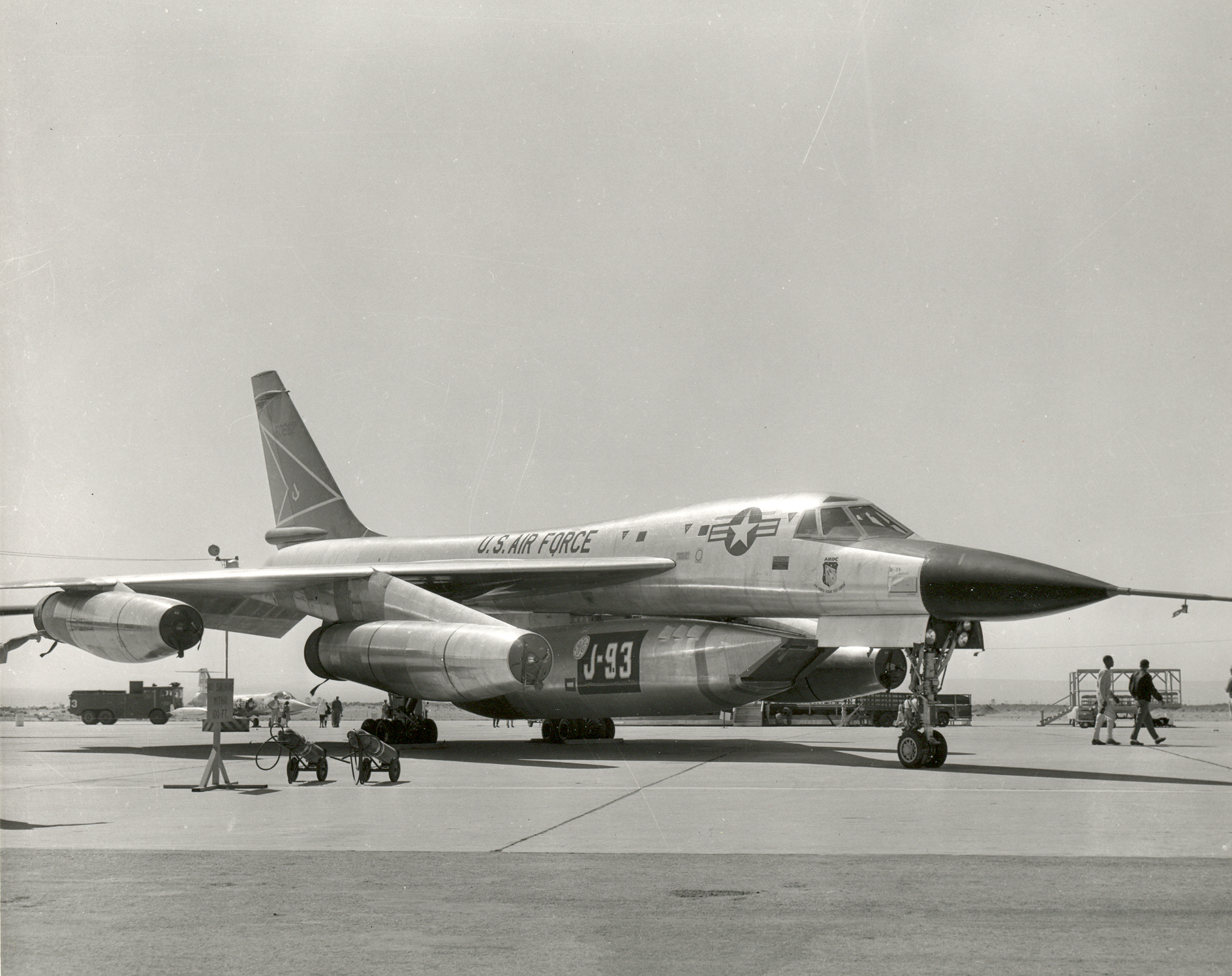General Electric YJ93 on:
[Wikipedia]
[Google]
[Amazon]
 The General Electric YJ93
The General Electric YJ93
 The General Electric YJ93
The General Electric YJ93 turbojet
The turbojet is an airbreathing jet engine which is typically used in aircraft. It consists of a gas turbine with a propelling nozzle. The gas turbine has an air inlet which includes inlet guide vanes, a compressor, a combustion chamber, and ...
engine was designed as the powerplant for both the North American XB-70 Valkyrie
The North American Aviation XB-70 Valkyrie was the prototype version of the planned B-70 nuclear-armed, deep-penetration supersonic strategic bomber for the United States Air Force Strategic Air Command. Designed in the late 1950s by North Ame ...
bomber and the North American XF-108 Rapier
The North American XF-108 Rapier was a proposed long-range, high-speed interceptor aircraft designed by North American Aviation intended to defend the United States from supersonic Soviet strategic bombers. The aircraft would have cruised at ...
interceptor. The YJ93 was a single-shaft axial-flow turbojet with a variable-stator compressor and a fully variable convergent/divergent exhaust nozzle. The maximum sea-level thrust was .
Design and development
The YJ93 started life as the General Electric J79-X275, an enlarged version of theGeneral Electric J79
The General Electric J79 is an axial-flow turbojet engine built for use in a variety of fighter and bomber aircraft and a supersonic cruise missile. The J79 was produced by General Electric Aircraft Engines in the United States, and under lice ...
turbojet with "275" meaning Mach 2.75, the engine's target operating speed. This design evolved into the X279 when Mach 3 cruise became a requirement, and ultimately became the YJ93.
The engine used a special high-temperature JP-6
Jet fuel or aviation turbine fuel (ATF, also abbreviated avtur) is a type of aviation fuel designed for use in aircraft powered by gas-turbine engines. It is colorless to straw-colored in appearance. The most commonly used fuels for commercial a ...
fuel. The six YJ93 engines in the XB-70 Valkyrie were capable of producing a thrust to weight ratio of 5:1 allowing for a speed of (approximately Mach 3) at an altitude of . The first engine went on test in September 1958 and featured advanced technology achievements such as electrolytically drilling longitudinal air cooling holes in the turbine blades.
The XF-108 interceptor was cancelled outright, and the B-70 project was re-oriented to a research project only.
Variants
;J93-GE-1: thrust with afterburner. ;J93-GE-3: Production variant produced in small numbers for theNorth American XB-70 Valkyrie
The North American Aviation XB-70 Valkyrie was the prototype version of the planned B-70 nuclear-armed, deep-penetration supersonic strategic bomber for the United States Air Force Strategic Air Command. Designed in the late 1950s by North Ame ...
programme.
;J93-GE-3R: Variant with thrust reverser, thrust with afterburner.
;J93-GE-3AR: Variant intended for the North American XF-108 Rapier
The North American XF-108 Rapier was a proposed long-range, high-speed interceptor aircraft designed by North American Aviation intended to defend the United States from supersonic Soviet strategic bombers. The aircraft would have cruised at ...
.
Applications
* Convair NB-58A Hustler (testbed) *North American XB-70 Valkyrie
The North American Aviation XB-70 Valkyrie was the prototype version of the planned B-70 nuclear-armed, deep-penetration supersonic strategic bomber for the United States Air Force Strategic Air Command. Designed in the late 1950s by North Ame ...
* North American XF-108 Rapier
The North American XF-108 Rapier was a proposed long-range, high-speed interceptor aircraft designed by North American Aviation intended to defend the United States from supersonic Soviet strategic bombers. The aircraft would have cruised at ...
(intended)
Specifications (J93-GE-3)
See also
References
{{USAF gas turbine engines 1950s turbojet engines YJ93 Abandoned military aircraft engine projects of the United States